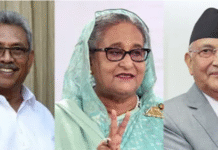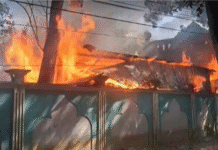“We will remain unwritten through history, no X will mark us on the map; but in books of prose and poetry, you loved me once, in a paragraph.”
― Lang Leav, Memories
Alone on the bus, after the last passenger had disembarked from it, the girl looked to a quiet, undisturbed ride home. It was dark outside. There was still some distance left to go, so she concentrated on what lay ahead. Her family would be surprised to see her, if a tad irked by her preference for night travel, but they would be ecstatic to hear what she was going to tell them: news of her pay raise in office. She knew how much it would mean to them.
She looked outside, waiting longingly for her turn to get off the bus. Nothing, however, could have prepared her for what was about to happen soon. The bus entered a deserted road, near a forest, when she saw one of the associates of the driver approach her. Before she knew it, he attacked her. Soon he was joined by others who dragged her to the rear of the bus where she was beaten, robbed of her belongings, and gang-raped. As if that was not horrific enough, they killed her and then dumped the body in the jungle.
Who was this girl? Was it the 25-year-old law graduate identified as Rupa—whose story probably generated more response than most rape stories do in Bangladesh? Was it the 18-year-old raped on the Eid day in Bauphal? Or the 17-year-old raped in Savar’s Bomka area? The increasing frequency of rape incidents in Bangladesh sometimes makes it harder to separate one incident from another, but as far as end results go, it doesn’t really matter. All were scarred for life, although not all were lucky enough to survive.
The circumstances of what happened to these women were starkly similar: they were outdoors during the time of the incident, caught off guard by conniving men in groups of three, four or more, and tortured in the most brutal way imaginable. Unlike Rupa, however, the other victims didn’t receive more than fleeting coverage.
If the account of Rupa’s death, as provided by our oh-so-vigilant newspapers, seems a bit graphic, it’s because, frankly, we like it graphic. The more graphic the description and dramatic the circumstances, the more newsworthy it gets, the wider its appeal to the public. Rupa had to be the face of middle-class struggle before she could draw our attention. The two university students in Banani had to be a story of courage in the face of fear and shame to provoke a firestorm of protests. The schoolteacher in Barguna had to appeal to our sense of respect for teachers to be catapulted from the shadows.
The rapists, on the other hand, had to go to extraordinary lengths to jolt our collective conscience. The nation’s psyche and even the justice system seem to have become less receptive to stories with an insipid plotline.
The fact is, our response to rape incidents is often conditioned by our notions of priority. We need to feel connected to the particular circumstances of an incident and backgrounds of the perpetrators/victims for it to be worth our attention. The Rupa incident drew parallels with the 2012 Delhi gang rape involving a 23-year-old female physiotherapy intern, who was beaten, tortured and left for dead by a group of men. Some people were shocked to see that Bangladesh could stoop so low as to repeat India’s crime, conveniently forgetting that rape on a vehicle is not without precedent in Bangladesh. It’s just that the previous incidents didn’t have the elements necessary to tap into the popular imagination.
Like it or not, such selective public outrage over rapes, especially in social media, is doing us more harm than good. It promotes bias in favour of certain victims. It also takes pressure off the authorities to act on the less discussed incidents, thereby promoting uneven execution of the law and even denial of justice in some cases. Whether such outrage should be factored into legal and security considerations is a question worth asking.
I think it’s important that we pay attention to all rape incidents in equal measure, irrespective of the circumstances of a rape, the background of a victim, and whether a perpetrator is just a random guy or someone with tentacles reaching all the way to the highest echelon of society. More important than “exemplary punishment” is evenly, regularly meted out punishment, which has a better chance of working as a deterrent to future rapists.
What’s happening in Bangladesh is a clear manifestation of a nation unable or unwilling to confront its rape crisis. According to Bangladesh Mahila Parishad, over a thousand women and girls were raped in 2016. Between January and June this year, according to Ain o Salish Kendra, 280 women were raped, 16 killed after rape, 39 suffered rape attempts, and five committed suicide after rape. This figure—comprising only reported incidents—may more than double before the year’s end.
If rape is a crime, we all are complicit in it: the government that failed to adopt a zero-tolerance policy on sexual violence and prioritise ending the impunity for rape; the people that failed to teach themselves to respect their women; the legal system that failed to make effective interventions; the media that failed to provide proportionate coverage of all incidents of gender-based violence. The result is the creation of an environment in which no place now feels safe enough, no transport friendly enough, no one impervious to the threat of violence.
As we grope in the dark for a solution that can actually deter men from forcing their lust on unwilling women, let us remind ourselves that creating a safer, more humane environment for the society’s most vulnerable groups is in our best interest. We can start working towards that goal by recognising the importance of approaching all incidents of violence with objectivity and an unbiased mind.
Source: The Daily Star









